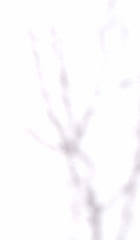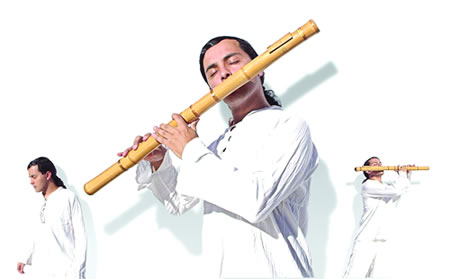
World Flutes Master

Take care of our enviroment

comprar

Peace web theme set courtesy of Crystal Cloud Graphics web set icon
Crystal Cloud Graphics
Crystal Cloud Graphics

Ken Bau
Oboe Bau is a double-reed aerophone of Viet majority. It is also known under other names such as oboe Gia nam, oboe Loa, oboe Bop, oboe Bat. There are 3 main kinds of oboe including oboe Tieu (Small oboe) tuned at C or D, oboe Trung (Medium oboe) tuned at G or A, oboe Dai (Great oboe) tuned at Eb or F.
Oboe Bau is formed by 4 components including body, reed, stake, and bell.
- The body is a cylindrical hollow hard-wooden tube whose upper-part diameter is smaller than lower-part diameter. There are 7 fingering holes located at one side of the body, and 1 fingering hole at the other side and toward one end of the body. The 7 fingering holes are pierced at equal distances.
- The reed of oboe Bau is double reed, and made of soft reed or worm nest. One end of it is crushed.
- The stake is a metal tube that connects reed with the body of oboe.
- The bell has a pyramid shape, and is either made of a gourd or turned from wood, or rolled by brass foil.
Oboe Bau provides with loud, sonorous and a little bit shrill sounds. Thanks to equal distances between fingering holes, produced sounds are similar to tones of tempered heptatonic scale. For instance, scale of oboe Tieu is Do (perfect) - Re (tender) - Mi (tender) - Fa (hard) - Sol (perfect) - La (tender) - Si (tender) - Do (perfect).
Oboe Bau is indispensable instrument to a great deal of orchestras such as Nha Nhac, Dai Nhac, Le nhac, Huyen Nhac, and especially orchestra of Tuong (Vietnamese classical opera). Nowadays, in addition to be a solo instrument, oboe Bau also participates in ensemble of integrated traditional instrumental ensemble.
Oboe Bau is a double-reed aerophone of Viet majority. It is also known under other names such as oboe Gia nam, oboe Loa, oboe Bop, oboe Bat. There are 3 main kinds of oboe including oboe Tieu (Small oboe) tuned at C or D, oboe Trung (Medium oboe) tuned at G or A, oboe Dai (Great oboe) tuned at Eb or F.
Oboe Bau is formed by 4 components including body, reed, stake, and bell.
- The body is a cylindrical hollow hard-wooden tube whose upper-part diameter is smaller than lower-part diameter. There are 7 fingering holes located at one side of the body, and 1 fingering hole at the other side and toward one end of the body. The 7 fingering holes are pierced at equal distances.
- The reed of oboe Bau is double reed, and made of soft reed or worm nest. One end of it is crushed.
- The stake is a metal tube that connects reed with the body of oboe.
- The bell has a pyramid shape, and is either made of a gourd or turned from wood, or rolled by brass foil.
Oboe Bau provides with loud, sonorous and a little bit shrill sounds. Thanks to equal distances between fingering holes, produced sounds are similar to tones of tempered heptatonic scale. For instance, scale of oboe Tieu is Do (perfect) - Re (tender) - Mi (tender) - Fa (hard) - Sol (perfect) - La (tender) - Si (tender) - Do (perfect).
Oboe Bau is indispensable instrument to a great deal of orchestras such as Nha Nhac, Dai Nhac, Le nhac, Huyen Nhac, and especially orchestra of Tuong (Vietnamese classical opera). Nowadays, in addition to be a solo instrument, oboe Bau also participates in ensemble of integrated traditional instrumental ensemble.
Text and Photos courtesy by Vietnam Datacommunication Company (VDC)
and Vietnamese Institute for Musicology (V.I.M)
and Vietnamese Institute for Musicology (V.I.M)








